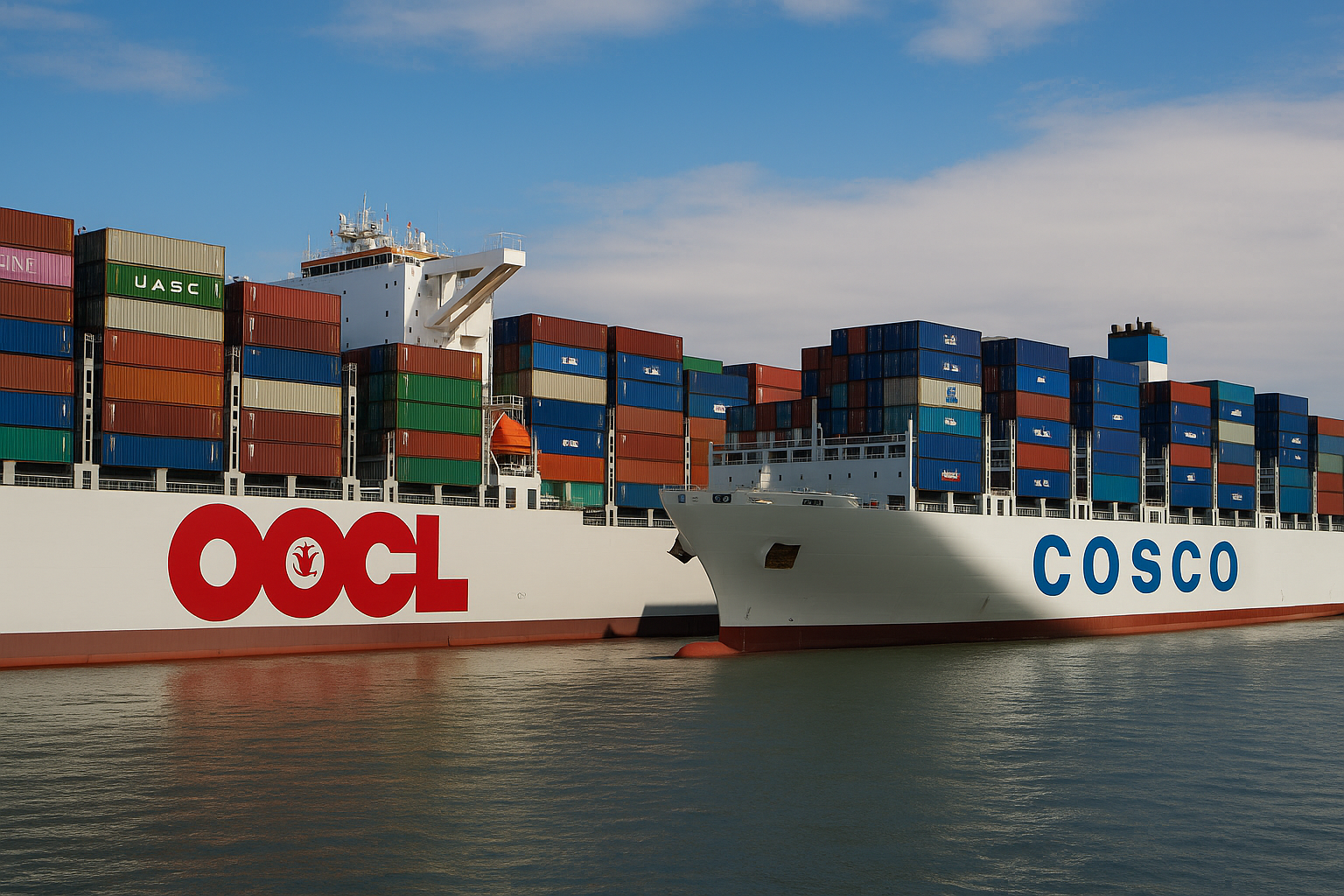US Fees on China-Linked Ships Spur Global Fleet Shifts

Global carriers are repositioning vessels ahead of new U.S. port charges slated for October that target China-linked tonnage, prompting visible changes in chartering and service planning.
Transatlantic tanker and dry bulk fixtures are already reflecting the shift, with Chinese-built ships redeployed to other regions. In containers, lines are reshuffling fleets to avoid autumn’s penalties.
Asia-based consultancy Linerlytica reports the Premier Alliance—HMM, ONE, and Yang Ming—will split its current Mediterranean Pacific South 2 (MS2) loop into two: the Asia–Mediterranean 2 (MD2) and the Middle East Gulf–US Gulf Pacific South 2 (GS2). The reconfiguration allows ONE to pull ten China-built vessels from U.S.-bound service on the MS2.
OOIL, parent of OOCL (owned by China’s COSCO), acknowledged last week that the likely October rollout of extra U.S. port fees on China-linked ships could be painful, saying the charges would have a “relatively large impact.” In response, OOCL and COSCO—both in the Ocean Alliance—have begun adjusting networks, including launching transpacific services that bypass the U.S. in favor of Mexico. Maersk has likewise said it intends to avoid assigning Chinese-built ships to U.S. trades and expects rivals to follow.
The U.S. Trade Representative (USTR) outlined in April a plan to start levying charges on China-linked tonnage calling at American ports from October 14, 2025, aiming to curb China’s dominance in shipbuilding and bolster U.S. yard capacity. U.S. Customs & Border Protection (CBP) will collect the fees under the USTR ruling. The regime covers both Chinese-owned/operated ships and Chinese-built ships under non-Chinese owners; failure to pay may lead to blocking cargo operations and withholding port clearance through operational bans.
Fee structure and scope
- Chinese-owned/operated vessels: from $50 per net ton, rising to $140 per ton by April 2028.
- Non-Chinese operators of Chinese-built ships: lower rates starting at $18 per ton or $120 per container, climbing to $33 per ton or $250 per container—whichever is higher.
- Fees are assessed per voyage/rotation, apply only at the first U.S. port of call, and are capped at five chargeable rotations per vessel per year.
- Exemptions include short-sea services, vessels below set size thresholds, U.S.-owned ships, ballast voyages, and certain specialized export carriers.
CBP says a new Pay.gov portal is in development to handle payments. Non-payment risks denial of essential port services—from offloading cargo to entry and departure clearances.
The finalized tiered approach follows industry consultation and marks a step back from initial April concepts that contemplated flat, multi-million-dollar per-call fees for Chinese-built ships. Supporters argue the policy will counter China’s clout in maritime supply chains, strengthen U.S. security, and stimulate domestic shipbuilding. Critics—including the World Shipping Council and major automakers—warn of higher consumer prices and potential volume losses at smaller U.S. ports.